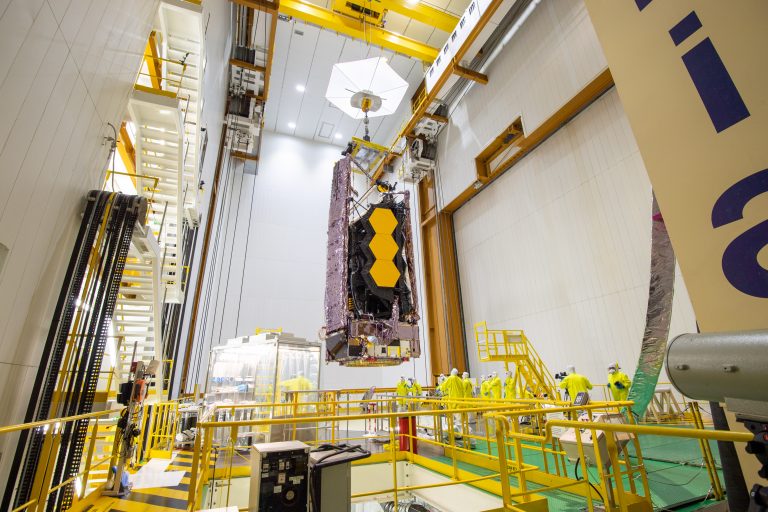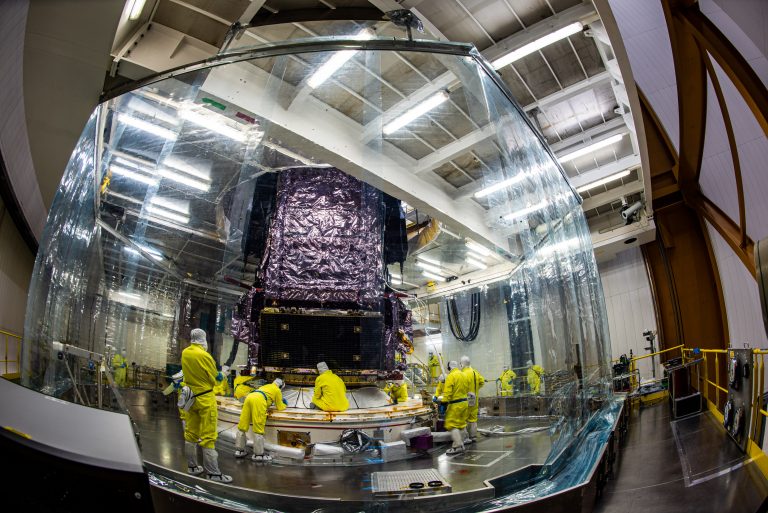
NASA's next big space telescope just took another step toward its highly anticipated launch this month.
On Saturday (Dec. 11), the $10 billion James Webb Space Telescope was secured atop the Arianespace Ariane 5 rocket that will send it into the final frontier from Europe's Spaceport in French Guiana.
"After its arrival in the final assembly building, Webb was slowly hoisted nearly 130 feet [40 meters] and then perfectly aligned on top of the Ariane 5, after which technicians bolted Webb’s launch vehicle adapter down to the rocket," NASA officials wrote in an update Tuesday (Dec. 14).
Webb had been scheduled to launch on Dec. 22. But on Tuesday, NASA announced that the liftoff has been pushed back to no earlier than Dec. 24 to work an issue involving communications between the telescope and the Ariane 5.
Related: Building the James Webb Space Telescope (gallery)

NASA bills Webb as the successor to the iconic Hubble Space Telescope, which has been studying the heavens from Earth orbit since 1990. The new observatory will go much farther afield: It's headed all the way out to the Earth-sun Lagrange Point 2, a gravitationally stable spot in space about 930,000 miles (1.5 million kilometers) from our planet.
That journey will take about a month, a stretch during which Webb will also perform a series of complicated deployments. For example, the observatory will unfurl its huge sunshield, which will be about the size of a tennis court when all is said and done.
Get the Space.com Newsletter
Breaking space news, the latest updates on rocket launches, skywatching events and more!
The sunshield will help keep Webb's instruments cool, a necessity for the observatory, which is optimized to view the cosmos in infrared light (wavelengths that we feel as heat). That's a key difference from Hubble, which mainly observes in optical and ultraviolet wavelengths. And Webb's primary mirror is about 21.3 feet (6.5 m) across, nearly three times wider than that of Hubble.
Webb will make a variety of high-impact observations over the coming years, if all goes according to plan. The telescope will peer at some of the universe's first stars and galaxies, for example, and sniff the atmospheres of nearby exoplanets for potential signs of life.
Mike Wall is the author of "Out There" (Grand Central Publishing, 2018; illustrated by Karl Tate), a book about the search for alien life. Follow him on Twitter @michaeldwall. Follow us on Twitter @Spacedotcom or on Facebook.
Join our Space Forums to keep talking space on the latest missions, night sky and more! And if you have a news tip, correction or comment, let us know at: community@space.com.

Michael Wall is a Senior Space Writer with Space.com and joined the team in 2010. He primarily covers exoplanets, spaceflight and military space, but has been known to dabble in the space art beat. His book about the search for alien life, "Out There," was published on Nov. 13, 2018. Before becoming a science writer, Michael worked as a herpetologist and wildlife biologist. He has a Ph.D. in evolutionary biology from the University of Sydney, Australia, a bachelor's degree from the University of Arizona, and a graduate certificate in science writing from the University of California, Santa Cruz. To find out what his latest project is, you can follow Michael on Twitter.









